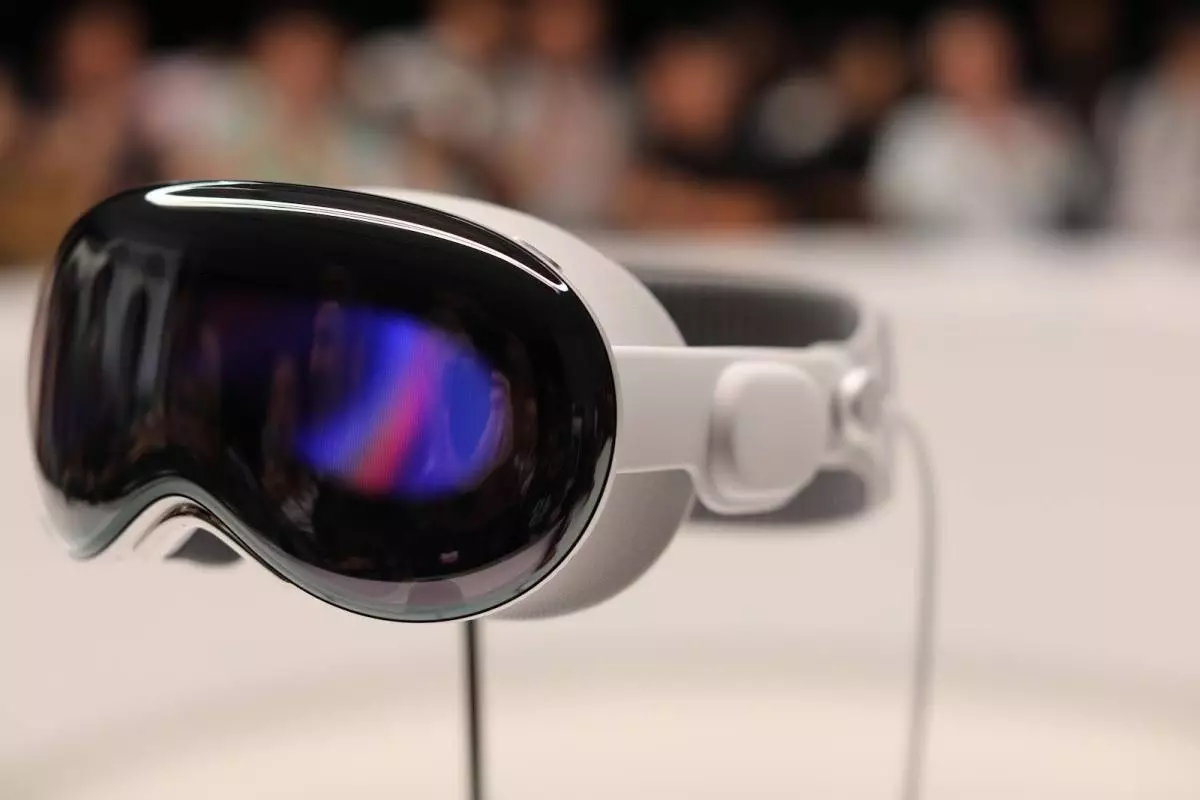With the tech world buzzing around the newest innovations in augmented and virtual reality, Apple Inc. is making significant strides into this domain with its Vision Pro headset and the latest iteration of its operating system, visionOS 2.4. Unveiled on Friday, Apple confirmed the launch of its generative AI platform, Apple Intelligence, tailored specifically for this groundbreaking device. As developers eagerly explore the beta version, set to culminate in a public release in April, the implications for users and the broader market are immense.
A New Era of Workflow Enhancements
The integration of Apple Intelligence into Vision Pro marks a pivotal shift in how users will interact with their devices. This suite of features includes tools like Rewrite, Proofread, and Summarize, aimed at enhancing productivity by generating text and images seamlessly. These tools are designed to integrate into the user’s workflow, offering practical solutions for tasks commonly performed on conventional devices like iPhones and Macs. Users can expect the first wave of AI updates to personalize and streamline their experiences, making the Vision Pro a more formidable player in the realm of spatial computing.
While the generative AI tools offer impressive capabilities, the real-world application could prove complex. The Vision Pro is defined not just by its entertainment features, but rather by its positioning as an extension of desktop computing. Apple has sought to differentiate it from other extended reality devices by presenting it as a tool for professionals, or as described in a TechCrunch review, “The infinite desktop.” However, it remains to be seen how well these promises hold up once users begin to adopt the technology for more significant tasks.
One of the standout features of the Vision Pro is its approach to text composition, yet it is important to address potential drawbacks. Currently, composing text on the headset requires users to utilize a selection method that feels slightly cumbersome: users must gaze at each letter and use a pinching gesture to select it. This method works adequately for short phrases but can quickly become tedious during extensive writing sessions.
Fortunately, Apple’s enhancements to voice interfaces offer a compelling alternative. The newly upgraded AI-driven Siri is expected to facilitate smoother interactions and voice dictation. Such advancements, when combined with generative AI writing tools, create a hybrid environment aimed at promoting more natural and faster communication. The rapid response features like Message Summaries and email Smart Reply further enhance users’ efficiency, allowing them to navigate through tasks without unnecessary interruptions.
Expanding Creative Possibilities with Image Playground
In addition to text-generation capabilities, the visionOS 2.4 update introduces the Image Playground feature. Embedded within the visionOS Photos app, this tool allows users to generate imagery through keyword prompts, thus elevating the creative potential of the headset. Users can articulate their visions verbally, and the technology will translate these prompts into striking visuals. This feature mirrors image generation functionalities set forth in other Apple platforms, providing a consistent user experience across devices.
While these offerings are intriguing, they raise questions about the uniqueness of Vision Pro’s feature set. As these tools are repurposed from other systems like iOS and macOS, users might expect more innovative functionalities that reflect the headset’s spatial computing capabilities.
To complement the Vision Pro experience, Apple has introduced a Vision Pro iPhone app, launching alongside iOS 18.4. This app serves multiple purposes; it enables users to browse visionOS content, including movies and TV shows, which can subsequently be transferred to the headset. This approach acknowledges users’ concerns about prolonged sessions in the headset, addressing comfort and battery life considerations, and catering to those who prefer to engage with content from the convenience of their iPhones.
Moreover, the companion app enhances user management, allowing for guest account management directly through the iPhone. When an outside individual attempts to access the Vision Pro, the headset prompts the owner for authorization, providing an added layer of security while promoting user-friendly interactions.
As Apple gears up for the official launch of visionOS 2.4 and its accompanying features, the Vision Pro is poised to make waves in the realm of spatial computing. Apple Intelligence has the potential to redefine user interactions and workflow dynamics within augmented reality, but its success will depend on user adaptation and ongoing enhancements. If executed successfully, the Vision Pro may very well set a new standard for what spatial computing devices are capable of, expanding horizons for creativity and productivity alike.

